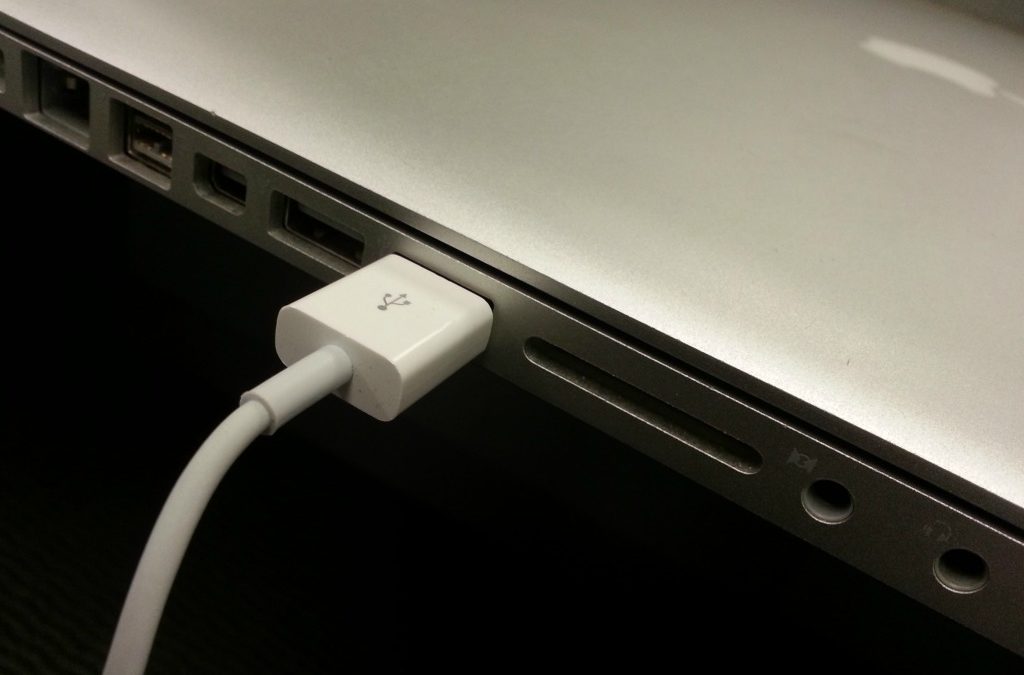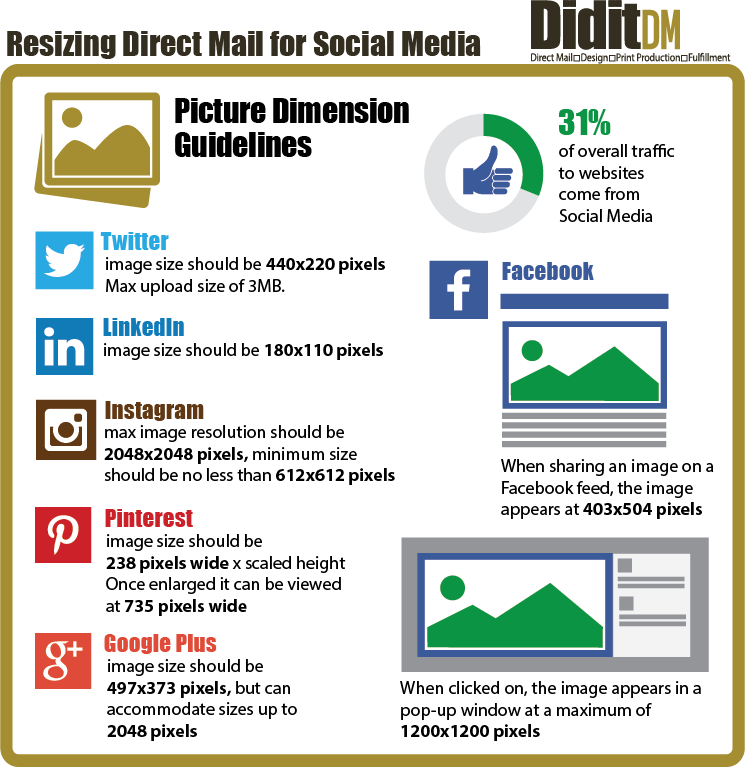If your business has not begun to embrace social media, you are falling behind the times. In Q4 of 2014 social media drove 31% of website traffic[i] . At the same time, direct mail remains an integral part of marketing strategies. Direct Mail is a physical way to reach with the customer while ideally prompting an interaction with the piece to make a connection.
In this evolving social media world, companies utilize varying platforms to extend their customer reach, and each platform has unique guidelines.
Images are king on Facebook, the biggest social network, with more than 1.39 billion active monthly users worldwide[ii]. Facebook gives its users two options to share content – a link or an image. When sharing a link, the image size is 377×314[iii], with a recommended upload size of 1200×630. When sharing an image, the size defaults to 403×504 with a recommended upload size of 1200×1200. When a user clicks an image in the feed, the size will increase as the image becomes the point of focus, which is why the recommended size is larger than the default size.
Twitter, LinkedIn, Pinterest, and Google Plus
For Twitter, an image should be 440×220 with a max upload size of 3MB. With LinkedIn, images will default to 180×110 in the feed. Instagram dimensions vary based on where the image is pulled from. There is a max resolution of 2048×2048 when the in-app camera is used while pictures not taken with the in-app camera will have a resolution of less than 612×612. Pinterest images are also rather unique with a dimension of 238 x a ‘scaled height’. Scaled height meaning that the length will be adjusted based on how large the original image is. Once a pin is enlarged, the width expands to 735 pixels. For Google+, a shared image is 497×373, while the image can be uploaded or viewed up to 2048 x 2048 since the image increases once clicked.
Tools you should know about
Several apps and programs available that can help you easily adjust artwork for the differing image requiements of today’s important social media platforms.
Canva. Canva is a great online tool that lets you create designs for multiple outlets: blog graphics, Facebook posts, Twitter cover photos and more. Canva can be used on a desktop or with their iPad app. The navigation is simple and users have the option to take a quick, informative tutorial upon first logging on.
Image Resizer+. Another beneficial app is Image Resizer+, built for use on iPhones. After selecting and uploading an image into the app, you can create custom resizes by adjusting the resolution of the pixels and manually entering the desired size. In addition to saving the image to a photo album, it can be uploaded directly to social media platforms.
PicMonkey. If you’re ever in a situation when Photoshop isn’t at hand, reach for PicMonkey for basic image resizing and cropping. While there’s no subsitute for the Photoshop’s layering method of creating images, PicMonkey is an incredibly useful daily graphic workhorse that can help you with the task of resizing direct mail images for social networks.
Keep your imagery consistent
Consistency is key to a successful campaign – not only between social media and direct mail, but among all platforms. Consistent brand messaging strengthens brand recognition and helps solidify a brand to the consumer. Consistency also establishes one personality for the company while differences in messaging can create multiple personalities, ultimately confusing the consumer. Uniform delivery of your brand will maximize the impact of your social media presence.
Make your mail piece a gateway to social media
When discovering the best social platform for your company, keep in mind the importance of integrating your direct mail efforts with your social media campaigns. A company can only be strengthened when campaigns have a cohesive message and fluid branding. Ensuring your direct mail pieces seamlessly drive customers to your online outlets should also be top of mind when establishing or expanding your marketing strategies. Finally, by proactively evaluating all of the requirements and ways to resize and reformat imagery or branding, less time will need to be spent entering new social media platforms–ultimately making the transition into social marketing less daunting.
[i] https://blog.shareaholic.com/social-media-traffic-trends-01-2015/
[ii] https://zephoria.com/social-media/top-15-valuable-facebook-statistics/
[iii] All dimensions noted in pixels












![By Photograph: Frank C. Müller, Baden-Baden (Own work) [CC BY-SA 2.5 (http://creativecommons.org/licenses/by-sa/2.5)], via Wikimedia Commons](https://www.diditdm.com/wp-content/uploads/2015/08/opening-an-envelope-150x150.jpg)
![By User:Introvert (Own work) [CC BY-SA 2.5 (http://creativecommons.org/licenses/by-sa/2.5)], via Wikimedia Commons](https://www.diditdm.com/wp-content/uploads/2015/10/1024px-Sparkling-snow.sierra-150x150.jpg)